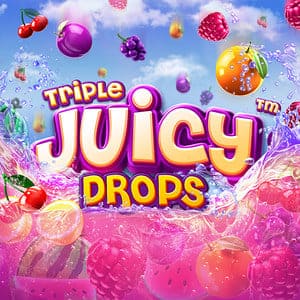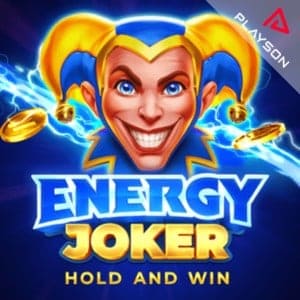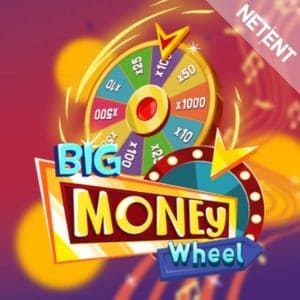
| Casinobeoordeling in Nederland
1
|
Tot €450 + 250 Gratis Spins
Min Dep:
€20
|
|
2
|
Welkomstpakket €450 + 250 Gratis Spins
Min Dep:
€20
|

A slot machine, often referred to as a fruit machine in British English, a poker machine, or pokies in Australian and New Zealand vernacular, is a captivating gambling device designed to offer its players a thrilling game of chance. These machines have become synonymous with casinos, drawing in crowds eager to test their luck. With a simple pull of a lever or a press of a button, players set the reels in motion, hoping for a fortunate alignment of symbols that could yield enticing payouts.
The traditional layout of a slot machine consists of a screen showcasing three or more reels that spin upon activation. In modern iterations, although some may still feature a lever, the majority operate using advanced random number generators, ensuring fairness and unpredictability in every spin. Players now frequently engage with these machines via buttons or touchscreens, making the entire experience sleek and user-friendly.
Most slot machines are equipped with sophisticated currency detectors that authenticate various forms of payment, including coins, banknotes, vouchers, or tokens. The thrill of the game lies in the anticipation of what symbols will appear when the reels come to a halt. The payout structure is directly correlated to the displayed pattern, with slot machines representing one of the primary revenue sources for casinos, contributing approximately 70% of the average U.S. casino's income.
The evolution of digital technology has introduced numerous variations to the classic slot machine concept. Players are not just spinning reels; they are engaging in a multifaceted gaming experience that can include interactive bonus rounds, immersive graphics, and themed gameplay. These advancements have transformed the slot machine into a dynamic entertainment option that captivates players of all ages and backgrounds.
Terms and their sources
The term “slot machine” originates from the slots on the machine that allow for the insertion and retrieval of coins. The designation “fruit machine” derives from the classic fruit symbols like cherries and lemons that once adorned the reels.
Slot machines have garnered a few pejorative nicknames, one of which is the “one-armed bandit,” a term alluding to the once prevalent mechanical levers that players would pull to initiate play. This phrase cleverly encapsulates the machine's ability to "rob" players of their money, much like a thief in the night.
History
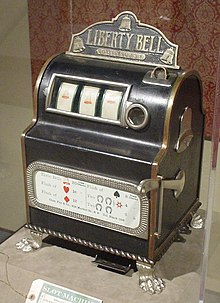
In 1891, a significant milestone in the history of slot machines occurred when Sittman and Pitt of Brooklyn, New York, developed a gambling device that served as a precursor to the modern slot machine. Their invention featured five rotating drums housing a total of 50 playing card faces and was heavily influenced by the game of poker. The machine quickly became a favorite in local bars, where patrons could insert a nickel and pull the lever, eagerly watching as the drums spun in hopes of achieving a winning hand. However, the absence of a direct payout mechanism meant that the rewards were contingent upon what the establishment was willing to offer—pair of kings might earn a free drink, while a royal flush could net the player cigars or complimentary beverages.
To skew the odds in favor of the house, two specific cards were often removed from the deck—namely, the ten of spades and the jack of hearts—effectively doubling the odds against landing a royal flush. Additionally, players could rearrange the drums to further diminish their chances of winning.
Due to the complexity of determining payouts for such a diverse array of winning combinations in the original poker-based game, it proved exceedingly challenging to create a machine that could dispense automatic payouts. Around the mid-1890s, Charles Fey, a brilliant inventor from San Francisco, crafted a more straightforward automatic mechanism featuring three spinning reels and a mere five symbols: horseshoes, diamonds, spades, hearts, and the iconic Liberty Bell. This innovative design significantly simplified the process of identifying winning combinations, allowing Fey to develop an efficient automatic payout system. The Liberty Bell machine achieved immense popularity, giving rise to a burgeoning industry focused on mechanical gaming devices.
As the demand for slot machines surged, they were soon banned in California, although Fey’s creations continued to thrive across the country. The first mass-produced copy of the Liberty Bell, manufactured by Herbert Mills in 1907, marked the beginning of a new era in slot machine history. By 1908, these “bell” machines could be found in cigar shops, brothels, and barbershops, further entrenching their status as a staple of American gambling culture.
The Liberty Bell machines initially used the same symbols as Fey’s original design, but manufacturers soon diversified by introducing patriotic symbols like flags and wreaths. Another iteration, the Operator’s Bell, even had an option for gum vending, incorporating fruit symbols on the reels to align with the gum offered. This evolution helped solidify the connection between slot machines and the imagery of fruit, which has become a hallmark of many modern designs.
As gaming regulations tightened, especially during the Great Depression, operators sought creative ways to circumvent laws against gambling. They began awarding food prizes, leading to a rise in skepticism towards gumball and vending machines, which were often scrutinized by the courts. Illustrative cases like State v. Ellis and State v. Striggles became pivotal examples in discussions about the legal definitions of gambling devices.
Fast forward to the 1960s, and Bally Manufacturing unveiled the first fully electromechanical slot machine, dubbed Money Honey. This revolutionary machine introduced the concept of a bottomless hopper and the capability to automatically pay out up to 500 coins without requiring an attendant, which further enhanced player convenience and excitement.
In 1976, the first video slot machine emerged, developed by Fortune Coin Co. in California. Utilizing a modified Sony Trinitron color receiver, it displayed graphics on a screen, marking the beginning of a new era in gaming technology. Following adjustments to prevent cheating, the video slot machine gained approval from the Nevada State Gaming Commission and quickly gained popularity among players.
The integration of advanced technology allowed for the creation of "multi-line" slot machines, which gained traction in the 1990s. These machines offered multiple paylines, enabling players to achieve wins even with non-traditional symbol arrangements. A prominent feature among video slots is the theme, often derived from popular media franchises, enhancing the overall gaming experience.
The landscape of slot machines continues to evolve, with newer models implementing interactive elements and engaging bonus features that keep players entertained and invested. As technology progresses, the allure of the slot machine remains ever potent, inviting players into a world of chance and excitement.
Operation

Players can activate a slot machine by inserting cash or, in the case of "ticket-in, ticket-out" machines, a paper ticket containing a barcode into a designated slot. Once activated, players can engage with the machine by pulling a lever or pressing a button, which sets the reels spinning. The anticipation builds as players await the outcome, hoping for a combination of symbols that will yield credits based on the machine's paytable. Popular symbols include fruits, bells, and lucky sevens, with many machines themed around specific locations or characters from popular culture.
Multi-line slot machines have surged in popularity since the 1990s, featuring more than one payline and increasing the chances of winning. While traditional three-reel machines typically offer one to five paylines, modern video slots may have as many as 1024 paylines. The amount wagered can significantly impact the payout, with higher bets generally leading to larger potential returns.
One of the primary distinctions between video slot machines and reel machines is how payouts are calculated. For reel machines, the maximum jackpot is typically only achievable when the player bets the maximum number of coins per spin. In contrast, video machines often multiply fixed payout values based on the number of coins wagered. This means players can potentially increase their odds of winning by placing higher bets on video slots.

Multi-way games have emerged as a popular alternative, allowing symbols to pay out as long as they appear in three consecutive reels from left to right, irrespective of traditional paylines. These configurations can allow for thousands of winning combinations, enhancing the excitement for players. Denominations can vary widely, from low-stakes penny slots to high-limit machines accepting bets of $100 or more.
Terminology
A bonus feature is a game-specific addition that activates when certain symbols align in a winning combination. The diversity of bonus features varies by game, with some rounds offering free spins or alternative winning combinations. In contrast, a candle atop the machine flashes to alert operators when attention is needed, such as a request for change or a potential jackpot.
Players often refer to groups of slot machines arranged in a circular formation as a carousel, providing a social aspect to the gambling experience. The coin hopper is where immediately available coins are stored for payouts, while the credit meter displays the player's current balance. A drop bucket collects excess coins diverted from the hopper, ensuring smooth operations for the casino.
EGM stands for "Electronic Gaming Machine," representing the technological evolution of traditional slot machines. One common bonus feature is the free spins round, where players can engage in a series of spins at no additional cost, enhancing the thrill without the risk of further investment.
A hand pay refers to a payout dispensed manually by an attendant when the machine's preset limits are exceeded. The hopper fill slip documents the replenishment of coins in the hopper, while the MEAL book tracks employee access to machines, ensuring proper monitoring and security.
Slot machines come in various formats, including low-level machines equipped with stools for seated play and stand-up machines designed for players to engage while standing. Optimal play represents the ideal gambling strategy to maximize potential returns based on the game's structure.
The payline is crucial in determining winning combinations, with classic machines offering a limited number of paylines, while video slots may boast intricate patterns and multiple ways to win. The concept of a persistent state refers to features that can trigger bonuses based on player activity over time, enhancing engagement and excitement.
The term roll-up describes the process of dramatizing a win, where sounds accompany a display of the winning amount on the machine's meter. However, players may also experience instances of a short pay, where a machine dispenses less than the due payout due to a depleted coin hopper.
A scatter symbol activates a pay combination based on its appearance anywhere on the reels, often leading to bonus games or increased prizes, while taste refers to minimal payouts designed to keep players engaged and returning for more spins.

Tilt refers to any technical malfunction within a machine that triggers an alarm. This term originated from older electromechanical slot machines, where tilt switches would alert operators to issues, but today it encompasses a range of potential faults in modern machines.
A theoretical hold worksheet is a manufacturer-provided document detailing the expected hold percentage based on the machine's design. Volatility or variance measures the risk associated with a particular slot machine, with low-volatility machines offering frequent smaller wins, while high-variance machines provide fewer but larger payouts.
Weight count refers to the total value of coins removed from a machine for counting, while wild symbols can substitute for most other symbols, enhancing the chances of creating winning combinations.
Pay table
Each machine features a pay table that outlines the credits awarded for specific symbol alignments on the payline. This essential component varies by machine, with some symbols acting as wilds, effectively increasing the odds of completing a winning line. The pay table is often displayed prominently on mechanical machines, while video slots typically incorporate this information into a help menu.
Technology
Reels
Historically, slot machines utilized revolving mechanical reels to determine outcomes. Initially, machines featured five reels, but three-reel configurations quickly became the standard due to their reliability.
However, three-reel machines had limitations, as the number of combinations was cubic, restricting manufacturers' ability to offer substantial jackpots. As technology advanced, manufacturers began incorporating electronics into machines, allowing for symbol weighting and disproportionate odds on certain symbols.
In 1984, a groundbreaking patent was awarded for an electronic gaming device utilizing a random number generator to select reel stop positions. This innovation allowed for a machine to create the illusion of higher payoffs than actual probabilities, greatly enhancing player engagement.
Modern machines often employ a virtual reel system, providing a staggering number of final positions and enabling manufacturers to offer massive jackpots while ensuring odds remain favorable for the house.
Computerization
With the rise of microprocessors, slot machines became capable of assigning different probabilities to each symbol on every reel. This advancement allowed for greater control over payouts while ensuring that players perceive the game as fair and engaging.
In the 1980s, machines utilizing microprocessors became prevalent in the U.K., ensuring compliance with gambling regulations. The internal monitoring system allowed operators to adjust payouts based on the number of coins in the payout reservoir, enhancing profitability while still rewarding players.
Video slot machines
Video slot machines, which do not rely on mechanical reels, offer extensive design flexibility, often featuring five or more reels. This design freedom allows for a multitude of symbols and combinations, creating the potential for enormous jackpots.
Modern video slots typically encourage players to engage with multiple lines, increasing the likelihood of winning combinations. The introduction of bonus games has further enhanced the appeal of these machines, offering players opportunities for substantial rewards while keeping them entertained.
Payout percentage
Slot machines are programmed to return a theoretical payout percentage of between 0% and 99% of the total money wagered by players. This figure, known as the "theoretical payout percentage" or RTP (return to player), varies by jurisdiction and is often legislated. For example, Nevada mandates a minimum payout of 75%, while New Jersey requires at least 83%.
Casinos carefully select winning patterns and payout frequencies to ensure a specific fraction of the money returned to the house while rewarding players during play. For instance, a machine costing $1 per spin with a 95% RTP would return an average of $950,000 to players over the course of 1,000,000 spins, keeping $50,000 for the operator.
The theoretical payout percentage is set at the factory, and altering this after installation requires a physical change of the software, a process regulated by gaming authorities to maintain compliance. Audits are conducted regularly to ensure slot machines adhere to the established payout percentages.
In recent years, more transparency regarding RTP figures has emerged, particularly among online casinos, allowing players to make informed choices. However, individual payout probabilities remain closely guarded secrets, and it is possible for casinos to advertise machines with high RTP while adjusting payout odds to entice players.
As technology evolves, so too does the landscape of slot machines, ensuring that they remain a popular and profitable attraction in casinos worldwide.
Legislation
United States
In the United States, the regulation of slot machines falls under the jurisdiction of state governments, with many establishing gaming control boards to oversee their use. Nevada is notable for having minimal restrictions on slot machines, allowing for public and private ownership.
In contrast, New Jersey permits slot machines only in licensed hotel casinos located in Atlantic City. Several states, including Indiana and Louisiana, restrict machines to licensed riverboats and barges. The territory of Puerto Rico imposes significant restrictions on machine ownership, although enforcement is lax.
Native American casinos operate under different regulations, with “Class III” gaming requiring tribal-state compacts that dictate the terms for operating slot machines. Some casinos may classify their machines as “Class II” games, where players compete against one another rather than the house, allowing for greater regulatory flexibility.
Canada
In Canada, gambling regulations are managed at the provincial level, with gaming boards overseeing the operation of casinos and slot machines. The federal government maintains minimal involvement, primarily through the Criminal Code, which categorizes gaming activities.
Ontario's lottery corporation has experimented with labeling systems for slot machines, displaying metrics like volatility and payout frequency to inform players. The recent reintroduction of online gambling in Ontario is expected to generate significant revenue, showcasing the evolving landscape of gaming in Canada.
Australia
In Australia, "poker machines" or "pokies" are categorized as "gaming machines" and are regulated at the state level. The proliferation of these machines has sparked debates about problem gambling, with New South Wales being the first state to legalize them in 1956.
Statistical data reveals that Australia has a higher per capita ratio of gaming machines compared to the United States, with significant contributions to government revenue. Regulations vary by state, with minimum return rates established to ensure players receive fair treatment.
Western Australia maintains strict regulations, limiting gaming machines to the Crown Perth casino, while other states have adopted measures to promote responsible gaming.
During the COVID-19 pandemic, the shutdown of gaming establishments drastically reduced the prevalence of poker machines, highlighting their societal impact.
Russia
In Russia, the emergence of "slot clubs" began in 1992, with a brief period of popularity before gambling establishments faced a ban in 2009. Today, slot machines are restricted to designated gambling zones.
United Kingdom
The Gambling Act 2005 governs slot machines in the U.K., classifying them into categories with defined stakes and prizes. Regulations ensure that casinos maintain a balance between offering entertainment while minimizing gambling-related harms.
Category A
No lawful Category A games currently exist in the U.K., following the cancellation of planned super casinos.
Category B
Category B games encompass subcategories that differentiate between various stakes and prizes, with Fixed Odds Betting Terminals (FOBTs) being a notable example.
Category C
Category C games, commonly referred to as fruit machines or one-armed bandits, are popular in pubs and clubs, offering numerous features and opportunities for players to win beyond standard payouts.
As the gambling landscape continues to evolve, regulations aim to address the complexities of player engagement, ensuring a balance between entertainment and responsible gaming practices.
Problem gambling and slot machines
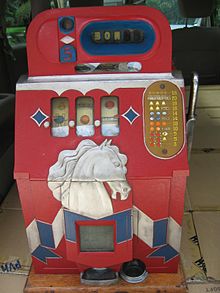
Experts in psychology and gambling addiction underscore the immersive experience inherent in slot machine play. Natasha Dow Schüll describes a "machine zone," where players lose track of time and monetary value, leading to detrimental behaviors. Research indicates that players of video slots may develop gambling issues more rapidly than those engaging in traditional casino games, even if they have prior gambling experience.
Eye-tracking studies have revealed that the visual stimuli from slot machines dominate players' attention, with problem gamblers displaying heightened focus on winning messages, revealing insights into the psychological mechanisms at play. Media reports, such as the 60 Minutes investigation, highlight the significant association between slot machines and gambling addiction, prompting discussions around regulatory measures and responsible gaming initiatives.
As the gambling industry evolves, addressing the risks associated with slot machines remains crucial to ensuring that players can enjoy these games without falling prey to the perils of addiction.
See also
- Casino
- European Gaming & Amusement Federation
- List of probability topics
- Multi-armed bandit
- Pachinko
- Problem gambling
- Progressive jackpot
- Quiz machine
- United States state slot machine ownership regulations
- Video bingo
- Video lottery terminal (VLT)
- Video poker
References
- ^ Cooper, Marc (December 2005). "How slot machines give gamblers the business". The Atlantic Monthly Group. Retrieved April 21, 2008.
- ^ "Slot Machine – Definition of slot machine by Merriam-Webster". merriam-webster.com.
- ^ OED, fruit, n.
- ^ "one-armed bandit". Oxford English Dictionary (Online ed.). Oxford University Press.
- ^ "History of Slot Machines". Slot-machine-resource.com.
- ^ "Charles Fey article". Casinogambling.about.com. 2009-06-22. Archived from the original on 2009-02-26. Retrieved 2009-08-04.
- ^ "The Long, Colorful, Profitable History of Slot Machines". The Indian Observer. Archived from the original on January 30, 2014. Retrieved 2016-07-18.
- ^ &#
